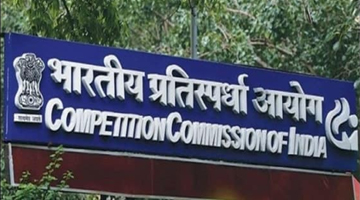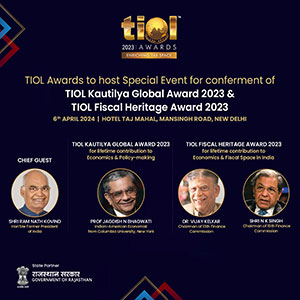Cus - Drawback claim - Under garb of clarifying Rules, CBEC cannot incorporate a restriction/limitation which does not find place in Drawback Rules - clause (d) of CBEC letter dated 30.12.2011 struck down: High Court
By TIOL News Service
MUMBAI, SEPT 02, 2014: THE Petition seeks quashing of the Circular/letter dated 30th December, 2011 issued by the CBEC to the extent that it purports to clarify that an exporter cannot claim the Brand Rate of drawback under Rule 7 of the Drawback Rules after having availed of the All Industry Rate of drawback under Rule 3. As a corollary the O-in-A taking such a view is also being challenged by the petitioner.
The Counsel for the Revenue raised a preliminary objection regarding maintainability of the Writ Petition on the ground that the petitioner had failed to exhaust the alternate appellate remedies available under the Customs Act, 1962.
The High Court observed that one of the main reasons for not entertaining the applications of the Petitioner seeking determination of the Brand Rate of drawback under Rule 7, was due to the clarification contained in the Circular dated 30th December, 2011 issued by the CBEC, and as there is no remedy under the Act or the rules to challenge the said Circular, the present petition is sustainable. Inasmuch as it was also noted that if the Circular is struck down, then the orders impugned would also automatically perish.
On the merits of the case, the petitioner inter alia submitted that they are entitled to the Brand Rate of drawback in terms of Rule 7, if the All Industry Rate of drawback notified under Rule 3 is less than 4/5th (80%) of the actual duties suffered on the inputs; that once the Brand Rate of drawback is determined in terms of Rule 7, the amount of drawback so determined, is disbursed after adjusting the amount of drawback already granted/disbursed to the Petitioner under Rule 3; that it is not as if the Petitioner gets full drawback under Rule 3 as well as under Rule 7; that this modus operandi was being followed by the Petitioner for a long period of time and the Revenue was accepting the Petitioner's applications under Rule 7 even after they had claimed drawback at the All Industry Rate under Rule 3; however, deviating from its long standing practice, the Revenue for the first time sought to reject the applications filed by the Petitioner under Rule 7 of the Drawback Rules on the ground that the Petitioner had already claimed drawback at the All Industry Rate under Rule 3 and hence the Petitioner was not entitled to now make applications under Rule 7 seeking determination of the Brand Rate of drawback for the very same exports; that the purpose of granting drawback on duty paid inputs/input services was to neutralize the incidence of tax and to ensure that the export of goods out of the territory of India were not put at a disadvantage and remained competitive in an otherwise fiercely competitive international market.
The Counsel for the Revenue submitted that once the exporter avails of the All Industry Rate of drawback as notified under Rule 3, he is deemed to be satisfied with the drawback availed of by him; that he is thereafter barred from making any application seeking determination of the Brand Rate of drawback under Rule 7 and this was the case even if the All Industry Rate of drawback granted under Rule 3 was less than 4/5th (80%) of the duties and taxes paid on the inputs / input services used in the production or manufacture of the exported goods; that the exporter has to decide at the time of the export of the goods whether he wants to claim drawback at the notified rate under Rule 3, or at the Brand Rate under Rule 7; that once he chooses to claim drawback under Rule 3, he thereafter cannot make a claim for the determination of the Brand Rate of drawback under Rule 7. Therefore, the Writ Petition deserves to be dismissed.
The High Court observed -
++ On a careful and conjoint reading of the aforesaid Rules, we do not find that there is any prohibition set out in the Drawback Rules which debars an exporter from seeking determination of the Brand Rate of drawback under Rule 7, merely because at the time of export, he had already claimed the All Industry Rate of drawback under Rule 3. In fact, to our mind, the Rules seem to suggest otherwise.
++ Firstly, Rule 3 which deals with "drawback", itself stipulates when drawback is not to be allowed. Despite specifying certain situations when drawback is not be allowed, we do not find any provision specified therein barring an exporter from seeking a determination of the Brand Rate of drawback under Rule 7, merely because, at the time of export, he applied for the grant of the All Industry Rate of drawback under Rule 3.
++ Secondly, Rule 7 categorically provides that where in respect of any goods, the manufacturer or exporter finds that the amount or rate of drawback determined under Rule 3 is less than 4/5th of the duties or taxes paid on the inputs/input services used in the production or manufacture of said goods, he may make an application within sixty days for determination of the amount or rate of drawback thereof under Rule 7, disclosing all the relevant facts and subject to the other conditions stipulated under Rule 7.
++ The word "finds" appearing in Rule 7 after the words "manufacturer or exporter", ex-facie indicates that it is only once the manufacturer or exporter comes to the conclusion that the amount or rate of drawback determined under Rule 3 is less than 4/5th of the duties or taxes paid on the inputs/input services used in the production or manufacture of the exported goods, can he make an application for determining the Brand Rate of drawback under Rule 7.
++ There could certainly be instances where the manufacturer or exporter would not, at the time of export, be able to determine and/or come to the conclusion that the rate of drawback determined under Rule 3 for the specified exported goods, is in fact less than 4/5th of the duties or taxes paid on the inputs/input services used in the production or manufacture of the said exported goods. To cover this difference, Rule 7(1) allows the manufacturer or exporter to make an application in this regard and claim the difference, provided the rate of drawback determined under Rule 3, is in fact less than 4/5th of the duties or taxes paid on the inputs/input services used in the production or manufacture of the said exported goods. In other words, if the rate of drawback as determined under Rule 3 is more than 4/5th (80%) of the duties or taxes paid on the inputs/input services used, then the application made under Rule 7(1) would have to be rejected.
++ Sub-rule (3) of Rule 7 inter alia provides that where a person applies for determination of the Brand Rate of Duty Drawback under Rule 7(1), then pending the application, he may provisionally apply for being granted duty drawback as determined under Rule 3 subject to executing a bond as stipulated therein.
++ If we were to accept the submission of the Revenue, that once an exporter or a manufacturer was to apply for drawback at the All Industry Rate under Rule 3, he would be debarred from seeking determination of the Brand Rate of drawback under Rule 7, then no exporter at the first instance, would ever apply for drawback at the All Industry Rate determined under Rule 3, and would always apply under Rule 7(1) for seeking determination of the Brand Rate of drawback, alongwith an application under Rule 7(3) for the grant of provisional duty drawback at the All Industry Rate as determined under Rule 3. This could not have been the intention of the Legislature or the Central government at the time of bringing into force the Drawback Rules.
++ We, therefore, hold that the manufacturer or exporter is not barred from seeking a determination of the Brand Rate of drawback under Rule 7 merely because, at the time of export, he had applied for and granted drawback at the All Industry Rate as determined under Rule 3. Our view also finds support in the language of the First proviso to Rule 3(1) and far from any prohibition in applying for Drawback in terms of Rule 7. Rule 7 comes into play only in cases where the amount or rate of drawback is low and not otherwise.
In the matter of the Board Circular/letter dated 30 th December, 2011, the High Court held -
++ On reading the Circular, and particularly paragraph (d) thereof, it is clear that the Circular seeks to interpret the Rules to mean that an exporter once having availed the All Industry Rate of drawback at the time of export, cannot file an application for determination of the Brand Rate of drawback under Rule 7. As discussed earlier, on a plain reading of the Drawback Rules, we do not find any such prohibition as is sought to be culled out by the CBEC in its Circular dated 30th December, 2011.
++ The CBEC whilst clarifying the said Drawback Rules has imposed limitations / restrictions which are clearly not provided for in the Rules and has the effect of whittling down the Drawback Rules. Under the garb of clarifying the Rules, the CBEC cannot incorporate a restriction/limitation, which does not find place in the Drawback Rules.
++ Read together and harmoniously it will have to be held that the Circular cannot override the Rules and particularly Rules 3 and 7 of the Drawback Rules and the sub-rules thereunder. This being the case, clause (d) of the said Circular is clearly unsustainable and has to be struck down. On the same parity of reasoning, and more so because the orders/letters impugned herein, rely upon the said Circular to reject the applications of the Petitioner seeking determination of the Brand Rate of drawback under Rule 7, even the said impugned orders/letters will have to be set aside.
In fine, it was held that the clause (d) of the Board Circular/letter dated 30th December, 2011 issued by the CBEC as well as the order-in-appeals cannot be sustained.
The Respondents were directed to forthwith accept the applications of the Petitioner and process the same as per the provisions of Rule 7 of the Drawback Rules.
The Writ Petition was accordingly disposed of.
In passing : For more - please also see DDT 2124 dated 11.06.2013 titled Drawback - Re-determination after claiming AIR in Shipping Bill - Board Instructions only for Pune Commissioner? .
(See 2014-TIOL-1485-HC-MUM-CUS)















